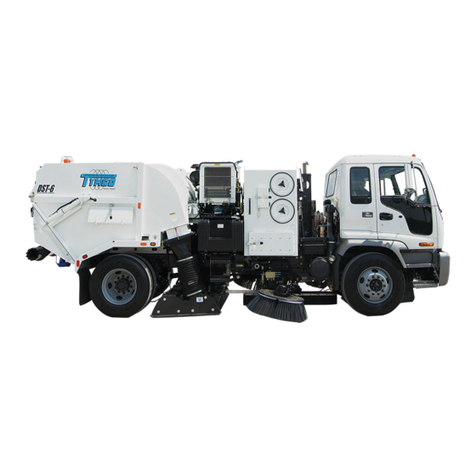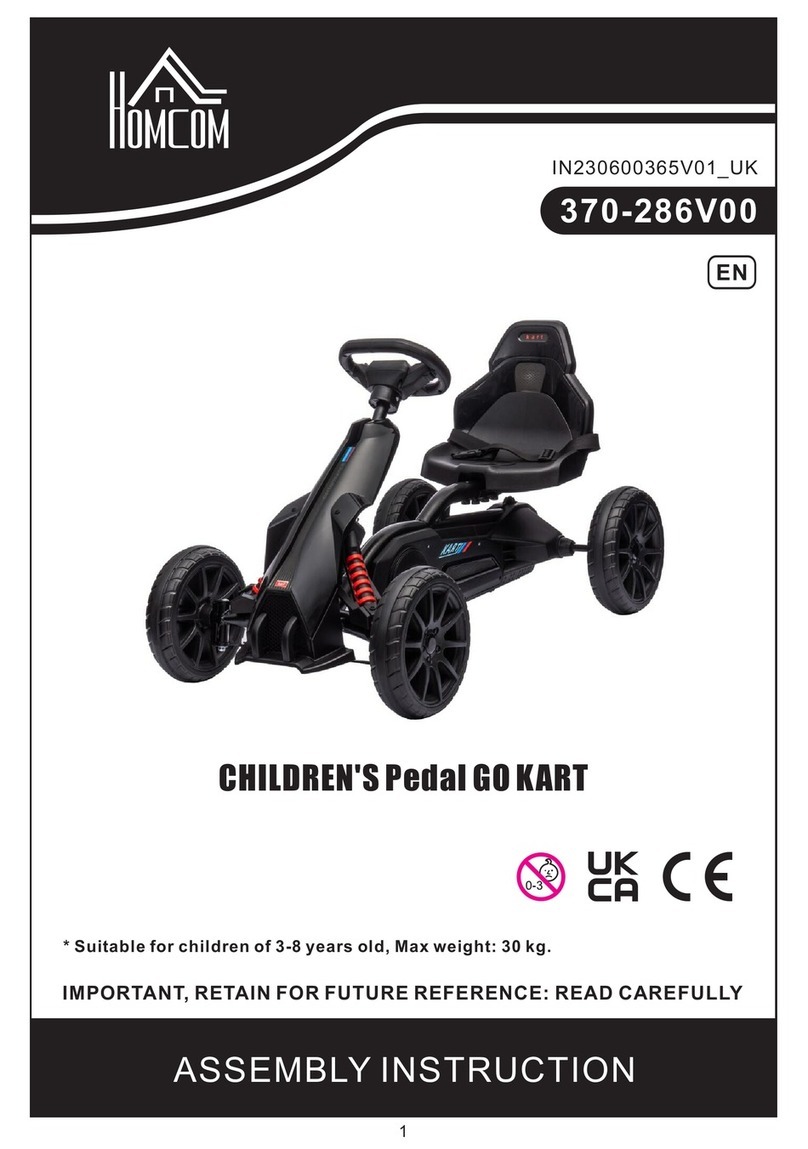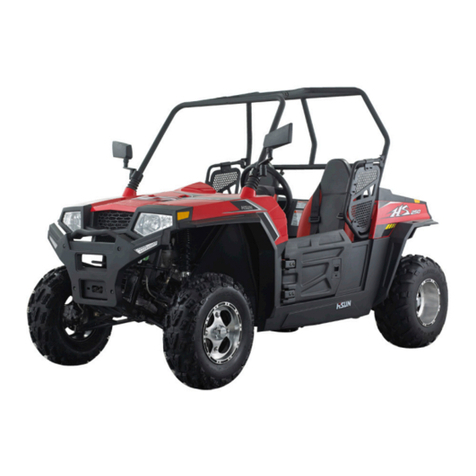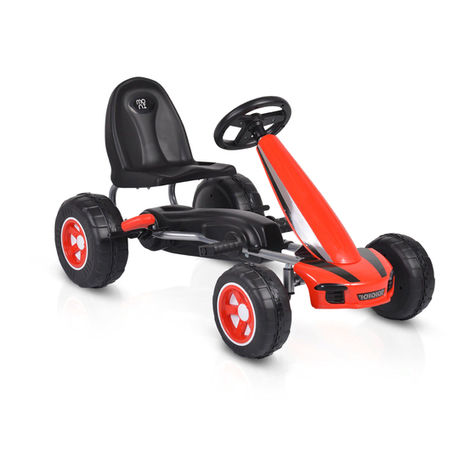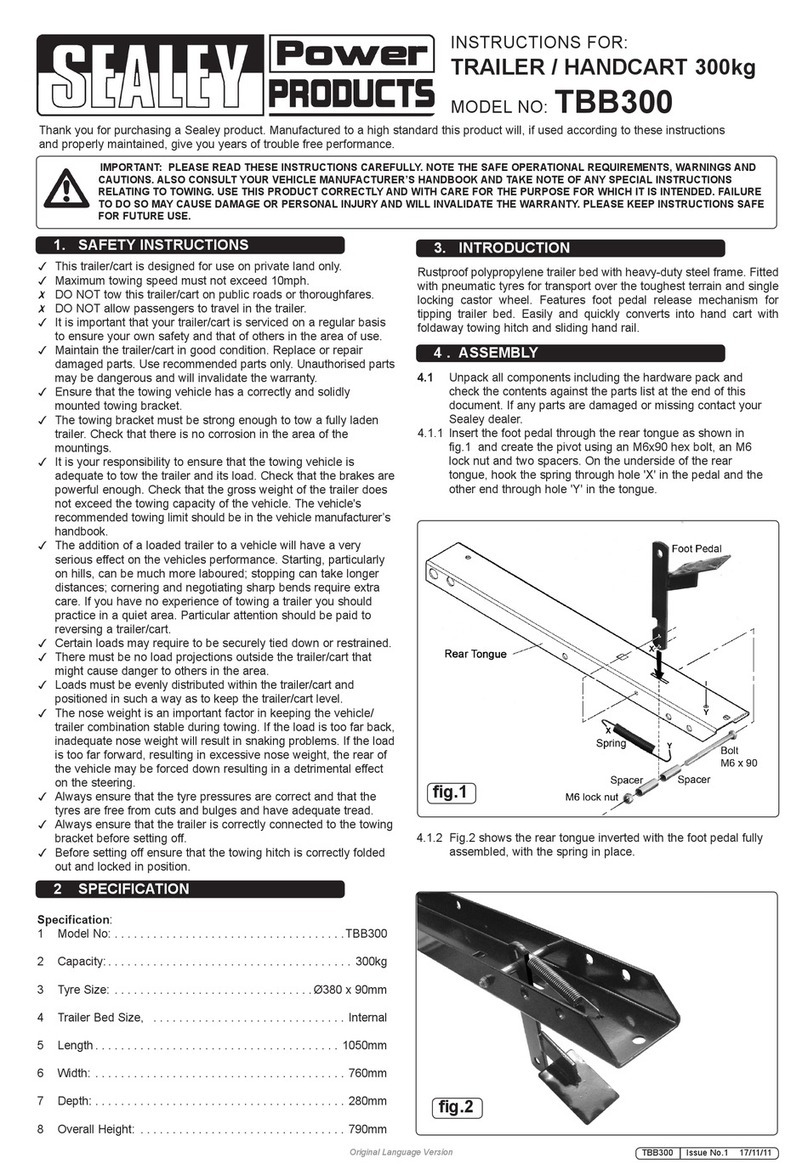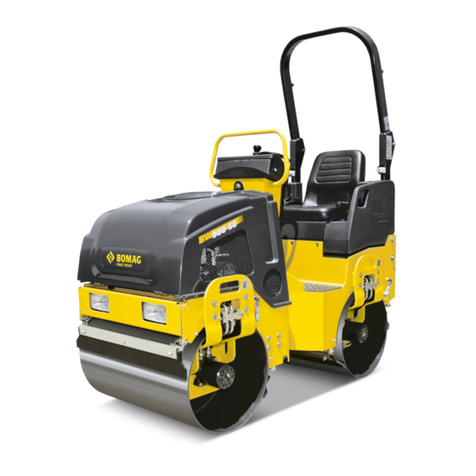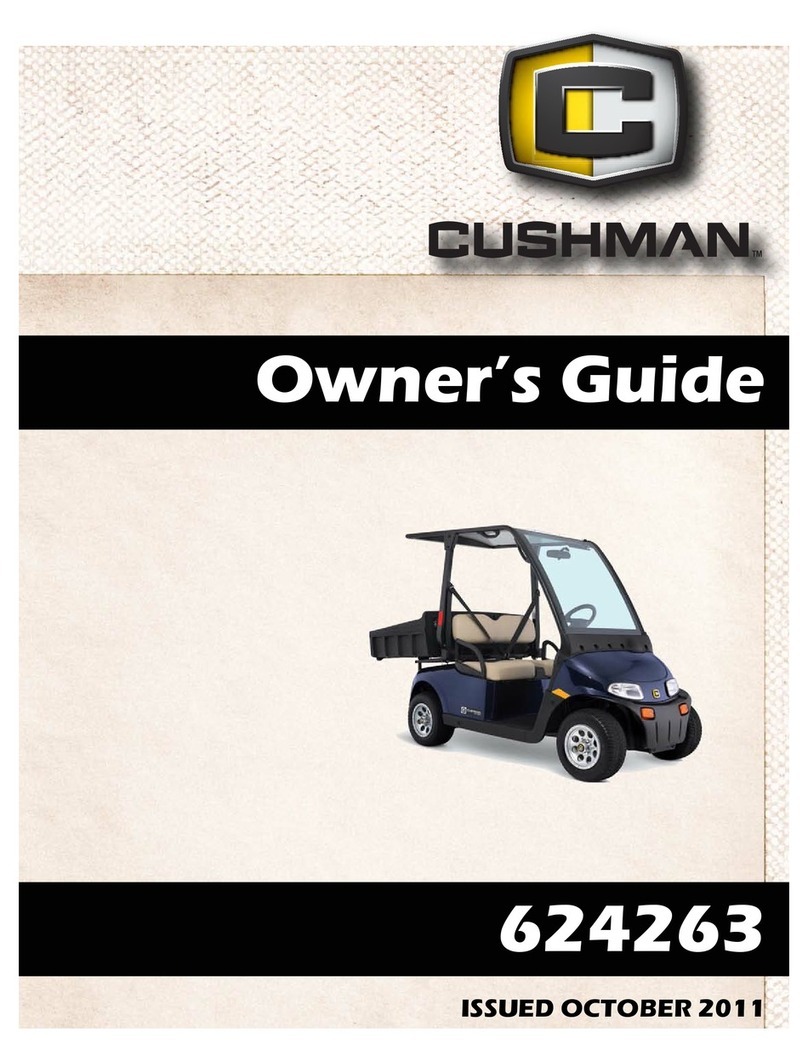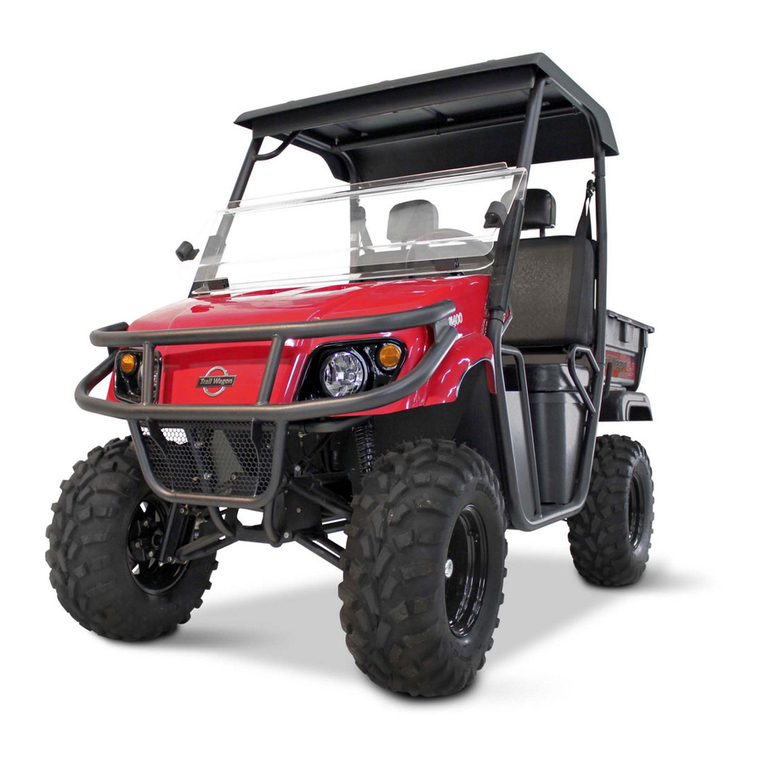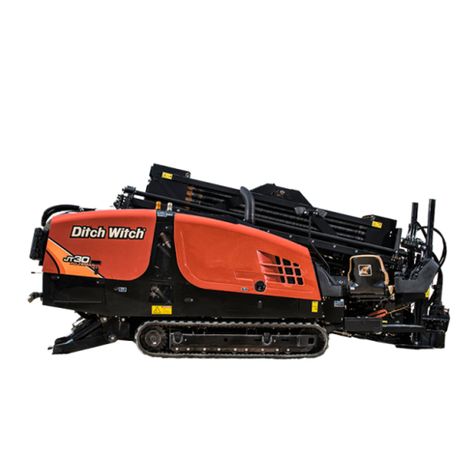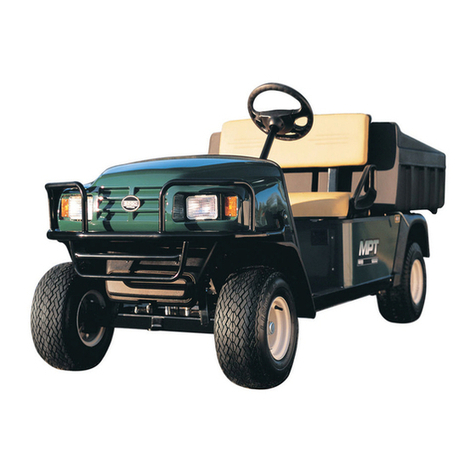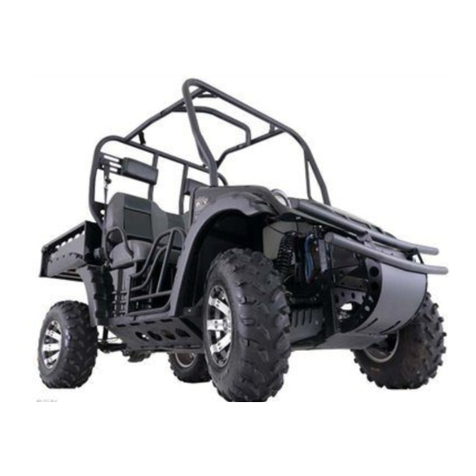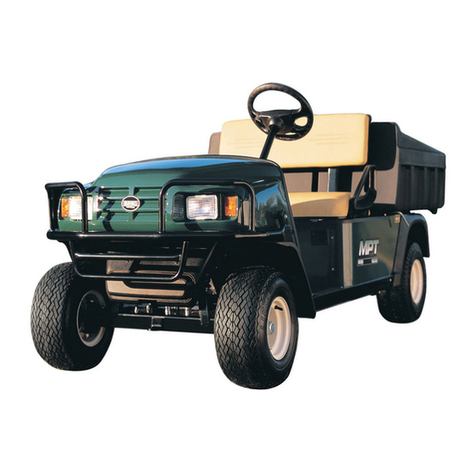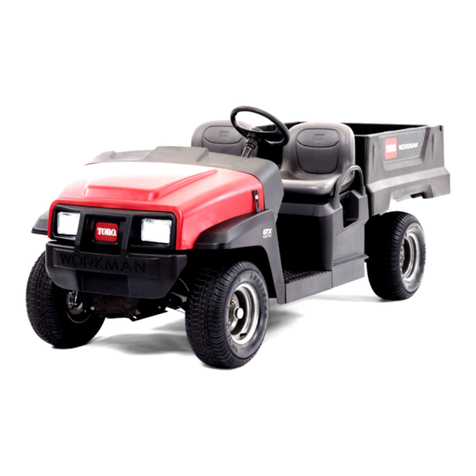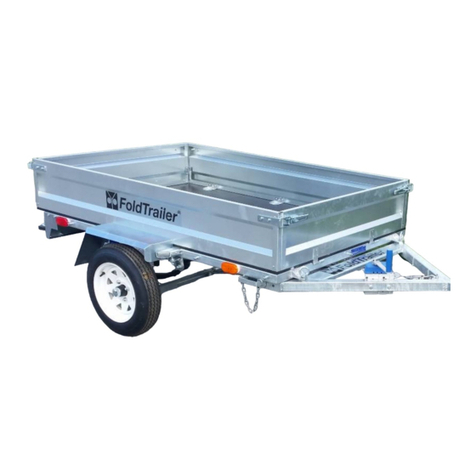Kässbohrer SILO Series User manual


IInnddeexx
1. GENERAL INFORMATION AND SAFETY INSTRUCTIONS
1.1. About the User Manual ..............................................................7
1.2. Meanings of Symbols Used in User Manual..............................7
1.3. Personal Protective Equipments.................................................8
1.4. Terms of Use and Safety Information ........................................9
1.5. Possible Dangers ........................................................................9
1.6. Danger Areas............................................................................13
1.7. Weather Conditions ..................................................................14
2. MAIN INFORMATIONS
2.1. Vehicle Identification Plate ......................................................15
2.2. Brake Data Plate.......................................................................15
2.3. VIN (Chassis) Numbers ...........................................................16
2.4. Warranty and Responsibility ....................................................16
3. TRAILER RUNNING GEAR AND USAGE INSTRUCTIONS
3.1. Brake System ...........................................................................17
3.1.1. Air Couplings ....................................................................17
3.1.2. Compressed Air Tanks ......................................................19
3.1.3. EBS Socket........................................................................20
3.1.4. Roll Stability Support (RSS).............................................21
3.1.5. PREV (Park Release Emer-gency Valve) .........................21
3.1.6. Brake Chambers ................................................................23
3.2. Suspension System...................................................................24
3.2.1. Manuel Control Lever .......................................................24
3.2.2. Auto Reset.........................................................................25
3.2.3. Electronic Controlled Air Suspension (ECAS).................25
3.3. Electrical System......................................................................25
3.3.1. 15 Pin Socket.....................................................................25
3.3.2. 2x7 Pin Socket...................................................................26
3.3.3. Light System .....................................................................27
3.4. King Pin ...................................................................................29
3.5. Landing Gear............................................................................29
3.5.1. Front Landing Gear’s Working Principle..........................29
3.5.2. Rear Landing Gear Working Principle..............................31
3.6. Side Protection Equipment (Underrun Protection) .................31
3.7. Semi-Trailer Axle System ........................................................32
3.7.1. Self-Steering Axles ...........................................................32

3.7.2. Axle Lifting.......................................................................34
3.7.3. Hubodometer.....................................................................34
3.8. Tires..........................................................................................35
3.9. Spare Wheel Holder .................................................................36
3.9.1. Crane Type Spare Wheel Holder.......................................36
3.10. Mudguards..............................................................................37
3.11. Mudguard with Sheet .............................................................37
3.12. Wheel Chock..........................................................................37
3.12.1. Pin Type Wheel Chock Holder .......................................37
3.12.2. Pocket Type Wheel Chock Holder ..................................38
3.13. Boxes and Storage Units ........................................................38
3.13.1. Stainless Steel Toolbox ...................................................38
3.13.2. Plastic Toolbox................................................................38
3.13.3. Aluminium Toolbox ........................................................39
3.13.4. Fire Extinguisher Cabinet ...............................................39
3.13.5. Water Tank ......................................................................40
3.13.6. Hose Carriers...................................................................41
3.13.7. Hydraulic Pump and Oil Tank.........................................41
3.14. Working Lamp........................................................................41
3.15. Ladder and Walkway..............................................................42
3.15.1. Foldable Ladder ..............................................................42
3.15.2. Fixed Front Ladder..........................................................43
3.15.3. Walkway..........................................................................43
3.15.4. Rope ................................................................................43
3.16. Rear Bumper (Rear Protection Equipment) ...........................44
3.16.1. Fixed Bumper..................................................................44
3.17. Night Park Plate .....................................................................44
3.18. Sliding Sheet Metal ................................................................44
4. UPPERSTRUCTURE COMPONENTS AND USE
4.1. Tipping Silo (SSK)...................................................................45
4.1.1. Overview to the Superstructure Components on Tipping
Silo .........................................................................................46
4.1.2. Loading / Discharging System ..........................................47
4.2. Non-Tipping Silo (SSL) ...........................................................58
4.2.1. Overview to the Superstructure Components on Non-
Tipping Silo............................................................................58
4.2.2. Loading / Discharging System ..........................................59
5. TRANSPORTATION PROCESS

5.1. Pre-Driving Checks..................................................................64
5.2. Semi-Trailer and Tractor Coupling ..........................................64
5.3. Cautions During the Parking and Stopping..............................65
5.4. Important Technical Considerations ........................................65
5.4.1. Fire Extinguisher...............................................................65
5.4.2. Wheel Chocks ...................................................................66
5.4.3. Modifications on the Trailer..............................................66
5.4.4. Air Leakage.......................................................................66
5.4.5. Welding .............................................................................66
5.4.6. Considerations For the Environment ................................66
5.5. Cleaning of the Vehicle ............................................................67
6. TRANSPORTATION SOLUTIONS
6.1. Customs Legislation.................................................................70
6.1.1. Semi-Trailer Structure Compliant with Customs
Legislation..............................................................................70
6.2. Dangerous Goods Transportation (ADR) ...............................70
7. LOADING AND LOAD SECURITY
7.1. Loading and Discharging Tipping Silo Vehicle .......................71
7.1.1. Safety Precautions.............................................................71
7.1.2. Load Distribution and Load Limits of Tractor – Semi
Trailer Combination ...............................................................71
7.1.3. Considerations During Loading – Unloading ...................72
7.1.4. Loading Preparation ..........................................................72
7.1.5. Loading .............................................................................73
7.1.6. Discharging .......................................................................74
7.2. Loading and Discharging Tipping Silo Vehicle .......................81
7.2.1. Safety Precautions.............................................................81
7.2.2. Load Distribution and Load Limits of Tractor – Semi
Trailer Combination ...............................................................81
7.2.3. Considerations During Loading – Unloading ...................81
7.2.4. Loading Preparation ..........................................................82
7.2.5. Loading .............................................................................82
7.2.6. Discharging .......................................................................84
7.3. Ferry Rings...............................................................................86
8. INSPECTION AND MAINTENANCE
8.1. Safety Instructions....................................................................87
8.2. Main Principles ........................................................................87
8.3. Checks to Be Performed Of The Time of the Delivery ...........87

8.4. Manhole Covers .......................................................................87
8.5. Discharge Cone ........................................................................88
8.6. Periodic Maintenance and Controls .........................................88
8.7. Important Warning! ..................................................................89
8.8. Trouble Shooting......................................................................89
8.8.1. Safety Instructions.............................................................89
8.8.2. Spare Tire Replacement ....................................................90

FOREWORD
First of all, thank you for choosing us for your new vehicle investment.
Your vehicle is manufactured with the latest production technologies to the highest quality
standards and equipped with the best safety and efficiency features.
You can find detailed information about the accessories, equipment and hardware that might
be in your vehicle in this manual. The defined options in this manual can vary according to
the vehicle specs.
Important information on how you can use your vehicle is explained in this user manual,
please be sure that you review and understand the content. We suggest keeping this user
manual available in your vehicle at all times. This information is specified in the product’s
user manual. We recommend you read this operating manual thoroughly to get the most out
of your vehicle.
* Owing to the developments in product research, the manufacturer reserves the right to
make any changes in the product, without any prior notice. The publication rights of this doc-
umentation belong to the manufacturer.

7 / 92
1. GENERAL INFORMATION AND
SAFETY INSTRUCTIONS
1.1. About the User Manual
The usage and operation information
given in this manual is prepared to make
sure the vehicle is used in compliance
with its purpose and as desired.
The instructions here contain important
recommendations to perform your oper-
ations safely, completely, and in the most
efficient manner. Complying with these
instructions, warnings and recommenda-
tions will prevent accidents, decrease
down-time & repair costs, and make sure
you use your vehicle safely, reliably and
problem-free.
Please read the operating instructions in
this manual carefully and completely.
The manufacturer is not liable for the
damages and deficiencies caused by the
failure to comply with these instructions.
The instructions herein must be sup-
ported by local laws, rules and regula-
tions. Please comply with these
instructions to prevent accidents and
protect your surroundings and the
environment.
Any usage of transportation that goes
beyond the use in accordance with the
rules will be considered improper use.
Transportation of the following is not
allowed:
•Carrying people and live animals
•Transportations that need to be car-
ried according to special instruc-
tions, e.g., dangerous good
transportations
•Transportation of unsecured goods
•Transportation of materials that are
dangerous due to their properties or
that need to be carried with special
equipment
•Exceeding technically and legally
permissible weights of the axles or
king pin load
•Exceeding of the maximum vehicle
speed
•Exceeding the permissible length,
width and height
•Unapproved parts like tires, acces-
sories, spare parts and etc. by the
manufacturer
•The manufacturer shall not accept
any responsibility for the problems
and faults that occurs that are not in
compliance with the purpose of the
vehicle’s usage. All the risks of this
issue belong to the customer.
It is necessary to keep the
user manual available on the
vehicle at all times.
The vehicle can be equipped
with a lot of different options.
The standard or optional fea-
tures will be explained in the
manual. Some options may
not be available for your
vehicle
Adhere strictly to the opera-
ting instructions when using
your vehicle. When problems
occur which can lead to dan-
gerous consequences, con-
tact the service centre
immediately.
1.2. Meanings of Symbols Used in
User Manual
Several warnings are available in this
manual to ensure maximum safety when
using your vehicle. Each warning is indi-
cated by a special symbol. These sym-
bols and their meanings are as follows.

The information specified by
this warning symbol is very
important for health and hu-
man safety. When the given in-
formation is ignored, serious
damage, injuries and even
death may occur.
This symbol specified in this
manual indicates that critical
accidents may occur when the
instructions do not comply.
This symbol is used when ad-
ditional information is
required.
This symbol is used when
chemicals and other substan-
ces can be disposed of with
precautions that will not harm
the environment.
1.3. Personal Protective Equipments
Personal protective equipments serves
the purpose of preventing injuries and
are prevents injuries and are determined
by regional regulations depending on the
load carried.
People who will work or perform opera-
tions on the vehicle must wear proper
and appropriate protective clothing.
•Depending on the load to be carried,
the eyes, ears, body, and respiratory
tract must be protected with the rel-
evant protective equipment.
•As a rule, gloves and work shoes
are always used.
It is obligatory to use approp-
riate personal protective
equipment during the
operations.
Long hair is particularly dan-
gerous when working on the
vehicle, regardless of whether
it is loose or tied up, and it
should be protected properly
to avoid tangling.
Wearing a tie, necklace and/or
dangling jewelry when wor-
king on the vehicle is strictly
prohibited. They may get
caught in moving parts or
mechanisms and cause inju-
ries and even death.
Protective Gloves
During the operation, protecti-
ve gloves must be used. Plea-
se make sure you are using
the correct type of gloves
when you are working with
hot parts or chemicals.
Gloves should fit snugly. Ot-
herwise, there is a risk of them
getting caught in moving
parts or mechanisms.
Protective Cloth
While working on the vehicle,
appropriate overalls must be
worn.
•Overalls should not have pleats,
buttons or external pockets and their
closure system should be made in
such a way that they can be opened
as soon as possible in case of an
emergency.
•Interior pockets should have fasten-
ings to close them up. Cuffs should
be adjusted to fit the wrist.
Protective Helmets

9 / 92
When working around the ve-
hicle, a lightweight helmet
approved by an accredited
institution should be worn.
Protective Ear Plugs
A hearing protective device
(headsets or ear plugs) should
always be used around self-
propelled vehicles.
Protective Goggles
Protective goggles should be
worn during all maintenance
operations.
Protective Mask
Appropriate protective masks
should be used when working
with substances that are dan-
gerous to breathe or in dusty
environments.
1.4. Terms of Use and Safety
Information
It is necessary to keep the warranty, op-
erating and maintenance manual and
other documentation about the vehicle
available on the vehicle at all times.
To prevent possible accidents and envi-
ron-mental pollution, follow the operating
instructions and binding regulations.
•Pay attention to the safety and
warning signs placed on your
vehicle.
•Always keep these safety and warn-
ing signs completely visible.
•Make sure that the load carrier is se-
cured properly.
•In case of any dangerous condition
in the operation of safety, stop your
vehicle immediately and inform the
authorized people or institutions.
•Do not modify anything on the ve-
hicle without a written manufac-
turer’s approval. Your vehicles
guarantee terms do not cover unap-
proved modifications.
•The spare parts must meet the tech-
nical requirements set forth by the
manufacturer company. Only the
original spare part/parts meet their
requirements.
1.5. Possible Dangers
Your silo vehicle has been designed using the most up-to-date technology and in compli-
ance with generally accepted technical safety regulations and rules. Nevertheless, its use
could involve risk of injury and death to the user and to others and damage to the vehicle it-
self and to other objects.
Below is a summary of dangers that can occur while working with the silo vehicle. It is rec-
ommended to read these dangers entirely.
Danger Source Consequences
Components transferring pres-
surized air
Risk of burns!
Components conducting pressurized air can reach
temperatures above 100 ° C when in ope-ration,
and will cause burns if touched.
Do not forget to wear protective gloves when
you pressurize the connections.

Loose hoses when compressed
air is being released
Danger of injury!
Loose hose ends can cause physical injury
•Only apply pressure to the system when
the hoses are connected at both ends
tightly.
•
•Only allow compressed air to escape when
no hoses are connected.
Pressurized silo tank and
manhole
Danger of fatal injury!
If you loosen or tighten the manholes under pres-
sure, the manhole can tear away explosively from
the silo tank and hit you or other people.
Never attempt to open the clamps of a pressur-
ized manhole.
Don’t remove the blind cover from a coupling
that is under pressure. Connect the material ho-
ses before the system is pressurized.
Never attempt to loosen or tighten the clamps
of a discharge cone that is under pressure.

11 / 92
Contact with the load when un-
loading, loading or cleaning Health risk!
Under certain conditions, the load can be danger-
ous to health if inhaled or it comes into contact with
the skin or eyes.
Avoid physical contact with the load. Avoid in-
haling any dust that may escape.
Wear protective clothing according to the type
of the load.
If the load causes an injury, consult the materi-
al’s safety data sheet for the remedial action
that needs to be taken.
Friction of the load against the
tank wall and fittings
Danger of fire and explosion !
If the potential conductor is not connected, static
charges can cause sparks and thus explosions.
•Connect the potential conductor while fill-
ing, discharging and cleaning.
Rolling and drifting while rais-
ing/lowering the silo tank
Danger of fatal injury!
Raise/lower the silo vehicle at a steady speed.
Hose couplings Danger of injury!
A load that is being discharged under pressure can
cause serious injury to the face and body
•Never loosen hose couplings while filling
or emptying.
•Always tighten the hose couplings carefully
and secure them with the safety clips.

Raising the silo vehicle Danger of fatal injury !
The silo vehicle can roll over if it is not standing
firmly.
•Make sure that the ground surface is even.
•Always deploy the rear landing gears (if
equipped).
•Lower the silo vehicle’s air suspension
completely.
•
•Do not alter the position of the rear landing
gears while the silo vehicle is raised.
Strong winds or storms Danger of fatal injury!
With the silo vehicle raised, it can tip over in strong
winds.
•Do not raise the silo tank when the wind
speed is above 40 km/h.
•Lower the silo tank immediately if the wind
speed rises above 40 km/h.
•Do not raise the silo vehicle when it is not
connected to tractor.
Compacted load Danger of skidding!
Product that becomes compacted will destabilize
the raised silo tank, and if there is sudden slippage,
the silo vehicle can be thrown backwards or
sideways.
•Avoid repeated raising and lowering of the
silo tank, because this can cause the load
to compact.
Contact with hydraulic oil Danger to health!
Under high pressure, hydraulic oil can escape and
cause burns or poisoning.
•Avoid physical contact with the hydraulic
oil.
•Do not loosen hydraulic hoses when the hy-
draulic system is under pressure.

13 / 92
Entering the silo vehicle Danger of fatal injury!
Entering the interior of the silo tank to inspect,
maintain, clean or for other purposes can be a seri-
ously dangerous to health. (This is a situation that
changes according to the material.)
•Only enter to the silo tank if it is absolutely
necessary.
•Before entering the silo tank, perform a gas
measurement according to the applicable
regulations.
1.6. Danger Areas
This section is an overview of the areas on and around the silo vehicle where there is an in-
creased risk to yourself or others.
Danger area Action to be made
Between the tractor and the silo
vehicle
When attaching and separating the silo vehicle and
the tractor, there is a danger of people getting
trapped or run over between the tractor and silo
vehicle.
•• People should be kept away from the dan-
ger area.
The walkway on the silo vehicle Climbing onto the walkway without the handrail is
opened, there is a danger of falling from the silo
tank.
•Always open the handrail before climbing
onto the walkway.
The walkway on the silo vehicle Climbing onto the silo tank when it is under pres-
sure involves an increased risk.
•Only climb onto the the pressurized silo
tank if it is absolutely necessary.

Around the silo vehicle The presence of unauthorized persons around the
vehicle during loading and unloading operations
constitutes an unnecessary risk for the safety of
yourself and others.
•Instruct unauthorized persons to leave the
silo vehicle’s danger area.
Beneath a separated silo tank In certain circumstances, separated silo tank can
suddenly drop, thereby injuring persons.
•Therefore, never stand behind a silo tank
separated from the trailer.
•For maintenance work, the silo tank should
be secured with suitable mechanical
devices.
1.7. Weather Conditions
Depending on weather conditions, make sure the vehicle is free from snow and ice at tem-
peratures below zero. Clean the snow or ice in the vehicle. Do not put yourself in danger dur-
ing this process.

15 / 92
2. MAIN INFORMATIONS
There are vehicle identification stickers
on the vehicle.
2.1. Vehicle Identification Plate
Vehicle identification plate is located on
the right side of the vehicle.
You may find the following information’s
on this plate;
Vehicle Identification Plate
1- Type approval number
2- VIN number
3- Technical total capacity
4- Technical king pin capacity
5- Technical an axle capacity
6- Technical total axle capacity
7- Nationally approved total capacity
8- Nationally approved king pin capacity
9- Nationally approved an axle capacity
10- Nationally approved total axle
capacity
11- Vehicle Type
Vehicle Identification Plate
2.2. Brake Data Plate
There is a brake data plate (2) on the ve-
hicle which is equipped with an EBS
system.
You may see this information on this
plate.
EBS Plate
1 Empty vehicle (without
load)
2 Loaded vehicle
3 Axle lifting
4 Brake chamber data’s
5 References
6 Driving height
7 Pin positions
8 IN/OUT-Connections

2.3. VIN (Chassis) Numbers
The VIN (chassis) number is located on
the right side of the vehicle and marked
with a different color than the chassis
color.
1- Vehicle identification plate
2- Brake plate
3- VIN Number
2.4. Warranty and Responsibility
Our trailers, semi-trailers and truck on-
board applications are manufactured in
compliance with regulations and our
quality standards. It is necessary to per-
form the maintenance to ensure our
products always operate in the most effi-
cient manner in compliance with our lat-
est directives and maintenance
programs. The warranty starting date is
the date that the vehicle is delivered to
the customer.
The performance of maintenance and re-
pair/servicing of the vehicle with the use
of original spare parts by authorized
service shall assure the client’s warranty
rights. This warranty is based upon the
usage and maintenance conditions de-
scribed herein and in the warranty book.
Thus, it is important to read and under-
stand this operation manual and war-
ranty book.
It is necessary to keep the warranty, al-
ways operating and maintenance man-
ual available on the vehicle to allow
authorized service performing the servic-
ing to see the warranty conditions and
maintenance records. In the repairs
made during the warranty period, the au-
thorized service performing the repair
will demand this. Purchasing one trailer
or semi-trailer is an important invest-
ment. For the highest return on your in-
vestment, it is necessary to comply with
the manufacturer’s procedures and rec-
ommendations during the operation peri-
od of the vehicle. The information
provided by the client/driver related to
the warranty written in this manual shall
be kept within our database.

17 / 92
3. TRAILER RUNNING GEAR AND
USAGE INSTRUCTIONS
1-2 Brake/Electric Connections
3 King Pin
4 Landing Legs
5 Toolbox
6 Side Protection
7 Mudguard
8 Tire
9 Bumper
3.1. Brake System
3.1.1. Air Couplings
The main connection between the truck
and trailers is air couplings.
Generally, 3 different types of air cou-
plings are used in the trailers. These 3
types of air couplings have the same
function but with different shapes and
connections. There are 2 different air
supply lines in the system.
•Brake Line (Yellow)
•Supply Line (Red)
Service Line: Pneumatically air hose
which will feeds the brake line.
Supply Line: Pneumatically air hose
which will feeds the air tanks and trailer.
According to the type of vehicle, your ve-
hicle can be equipped with one or two
different types of air couplings.
•Standard Couplings (Palm)
•Duomatic Coupling
•C (UK) Couplings
If your vehicle is equipped
with 2 different types of coup-
lings, you must use only one
type at the same time.
When the couplings are
mount-ing/demounting, the
parking brake of the truck and
trailer must be engaged.
If the brake parameters are
modified, your vehicle's brake
calculation might be non-sui-
table for regulations. Only aut-
horized services must service
to the EBS modulator.
Only authorized services and
personnel should make servi-
ce operations for the brake
system.
There might be test points on the chassis
or above the air couplings. When you re-
move the test points rubber protection
parts and push the points you can check
the air pressure on the brake lines.

Test point
Palm coupling with a test point
3.1.1.1. Mounting of Standard (Palm)
Couplings
Couplings
•Slightly slide plastic covers to the
upper side. Slide plastic covers to
upper side.
•Be sure that sealing surfaces are
clean and durable. If necessary,
clean/change the air coupling.
•The coupling which comes from the
truck should be pushed slightly from
the upper side to the lower side and
connect the coupling. Be sure that
couplings are matched correctly.
•First mount service line yellow (1).
•Mount supply line red (2).
3.1.1.2. Demounting of Standard
(Palm) Couplings
•The coupling which comes from the
truck should be pushed slightly from
the lower side to the upper side and
demount the coupling.
•First demount the supply line red
(2).
•Demount the service line yellow (1).
•Slightly slide plastic covers to the
lower side and close the plastic
covers.
Closing the coupling

19 / 92
Driving with a non-suitable air
connection is dangerous and
forbidden.
Using damaged air supply
parts can cause serious ha-
zards. Torn or damaged comp-
ressed air connectors reduce
the vehicle's braking
performance.
3.1.1.3. Mounting of C (UK) Couplings
Mounting the C (UK) Couplings
•Be sure that sealing surfaces are
clean and durable.If necessary,
clean/change the air coupling.
•First mount service line yellow (1).
•Mount supply line red (2).
•Be sure that couplings are matched
correctly.
3.1.1.4. Demounting of C (UK)
Couplings
•Push the latch from front to back
side on the C couplings and
remove.
•First demount the supply line red
(2).
•Demount the service line yellow (1).
The coupling filters have to be
clean regularly.
3.1.1.5. Mounting of Duomatic
Coupling
Duomatic Coupling Connection
•Be sure that sealing surfaces are
clean and durable.If necessary,
clean/change the air coupling.
•Push the arm and mount the cou-
pling (1).
The coupling filters must be
clean regularly.
3.1.1.6. Demounting of Duomatic
Coupling
•Push the arm and mount the cou-
pling (1).
•Pull back the arm slightly and close
the coupling cover.
3.1.2. Compressed Air Tanks
Pressured air can be stored in the air
tanks.
The quantities and capacities of the air
tanks can be changed according to your
vehicle specifications.
In cold periods of the year or when the
air humidity is high, the moisture in the
air can be condensed and collected in
the compressed air tank.
The tractors are generally fitted with air
driers to prevent condensation in com-
pressed air. The tractors are generally

fitted with air driers to prevent condensa-
tion in compressed air. Even if the air
driers system, the humidity in the air can
be condensed. The condensed water
must be drained out via the drain valve.
The water in the air tanks should be
completely drained out. That's why
please push the valve on the air tanks.
1. Compressed Air Tanks
2. Drain valve
The water in the compressed
air tank can cause corrosion
problems and affect the func-
tionality of the brake system.
The frozen water in the pneu-
matic lines can cause the fai-
lure of the brake system.
The water in the pneumatic
system should be checked
more frequently in cold weat-
her or extremely variable out-
side temperatures.
When the air tank pressure is
lower than 4,5 bars, the EBS
warning lamp on the tractor
turns on and the driver can
see this situation.
When the pressure in the ser-
vice line (in the red coupling)
is lower than 2,5 bars, the bra-
kes automatically lock.
3.1.3. EBS Socket
EBS Socket
Our trailers and semi-trailers are
equipped with an EBS system.
EBS is an electronically controlled brake
system, that is fitted with automatic load
sensing braking pressure regulation
(ALB) and automatic anti-skid systems
(ABS/ABV).
To activate the EBS system, your truck
and trailer must be equipped with an
EBS system. Please mount the EBS ca-
ble that will come from the truck to the
EBS socket on the trailer.
Other manuals for SILO Series
1
Table of contents
